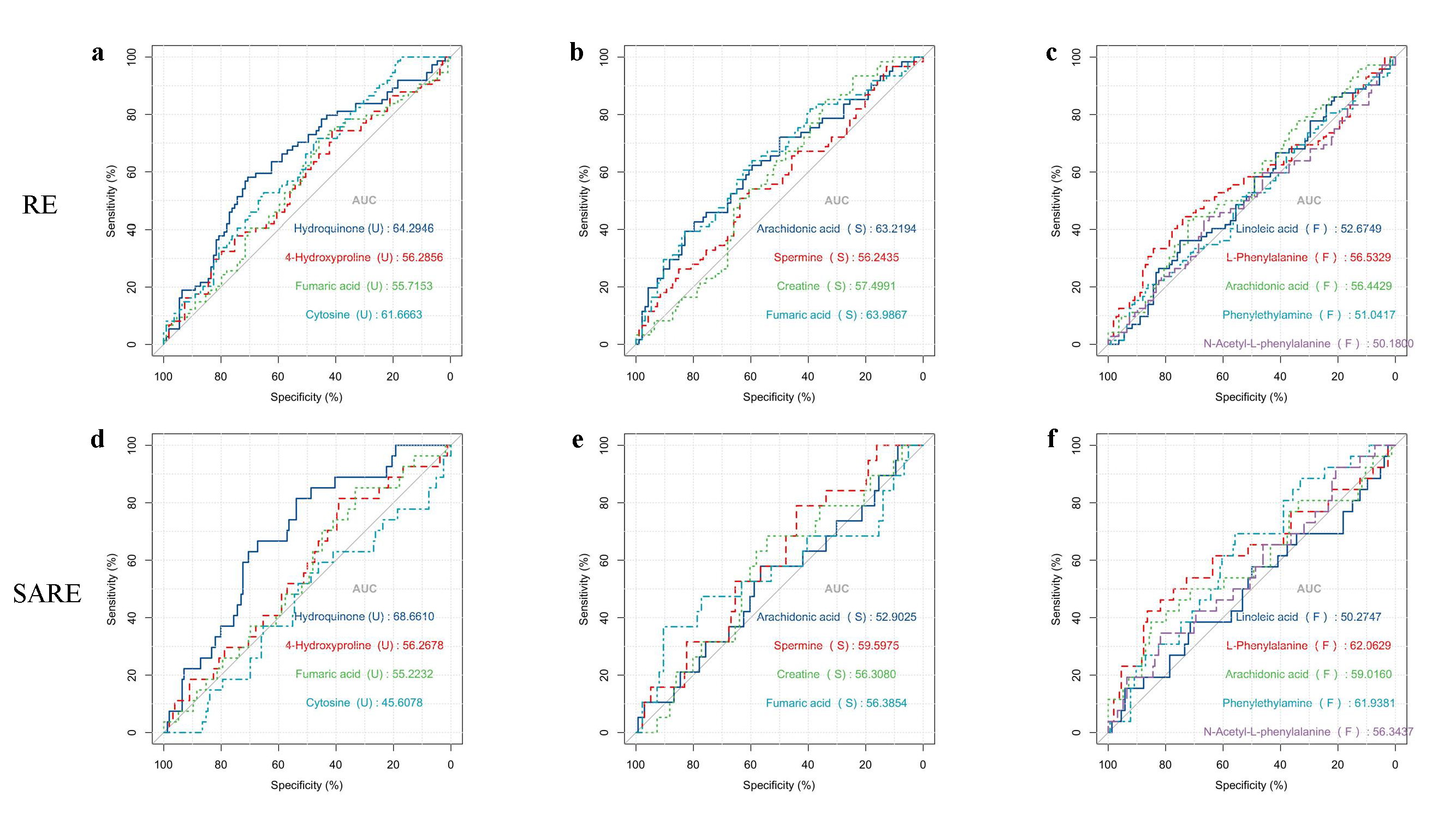The functional mechanism of gut microbiota in acute radiation enteritis based on metabonomics
PO-2201
Abstract
The functional mechanism of gut microbiota in acute radiation enteritis based on metabonomics
Authors: Chenying Ma1, Xiao-lan He1, Xiao-ting Xu1, Ju-ying Zhou1
1the First Affiliated Hospital of Soochow University Suzhou, Department of Radiation Oncology, Suzhou, China
Show Affiliations
Hide Affiliations
Purpose or Objective
To analyze the metabolomic changes of serum, urine and fecal samples during the VMAT of cervical cancer, to identify differential metabolites and co-metabolic pathways and to screen the characteristic metabolites of radiation enteritis (RE) and severe acute radiation enteritis (SARE).
Material and Methods
50 patients who received cervical cancer radiotherapy in our department and 15 normal healthy control women were enrolled, and serum, urine and fecal samples of patients during radiotherapy were collected at T0, T2, T4, and Tf, as well as during the baseline period of the control group. Through the LC/MS non-targeted metabolomics method, the differential metabolites were identified by metabolomics analysis process, and co-metabolic pathways were clarified. The mini-SOM library was used to incorporate characteristic metabolites, and the metabolite classification model for predicting RE and SARE were to be established.
Results
1. The clustering effect of urine and serum sample data were remarkable, and the metabolomics data of fecal supernatant was disturbed obviously.
2. During VMAT of cervical cancer patients, the urine samples were characterized by the first increased and then decreased of the arginine biosynthesis pathway and the arginine and proline metabolism pathways, and the down-regulation of the riboflavin metabolism and pyrimidine metabolism pathways. The fecal supernatant samples were characterized by up-regulated phenylalanine metabolism and LC metabolic pathways, and AA metabolic pathways first decreased and then increased. The serum samples showed arginine biosynthesis pathway first increased and then decreased, AA metabolic pathway, glutathione metabolic pathway and arginine and proline metabolic pathways were down-regulated.
3. It were screened out the metabolites predicting RE: urinary hydroquinone, serum AA; and the metabolites predicting SARE: serum fumaric acid, urinary hydroquinone, fecal phenethylamine.

4. An effective RE mini-SOM classification model was established successfully.
Conclusion
1. The cervical cancer patients showed the characteristic metabolic pathways.
2. It were successfully screened out the characteristic metabolites those predicted RE and SARE in this section.
3. The outline of the gut microbiota co-metabolism in RE and SARE environment were drawn preliminarily during VMAT for cervical cancer.